Merry Christmas to all my loyal OddBikers!
Sweet Jesus it's been a while since I've written anything.
It's not for lack of desire, it's due to a general lack of energy and inspiration following a day/week/month of working my ass ragged and trying to maintain some semblance of a personal life outside of my day job. Plus I got a new old car that needed sorting out over the course of many weekends.
I also spent some time rebuilding a 1993 GSXR 1100 WP in my living room, which I dubbed Project Vanilla Ice. I bought the bike in pieces through a friend of mine who found it on Kijiji in Red Deer, Alberta. It was complete and in fine shape aside from being torn apart and put into boxes, allegedly due to a transmission issue the owner never bothered to fix. I lucked out as the worst of it was a toasted clutch pack and some moderate dog wear on second gear. I had the whole thing restored in a few months and wheeled it out of my apartment just in time for the first month of Spring.
I immediately sold it after a mere 200 kms of shakedown rides when I came to the sudden realization that I have no desire to own a fat old Japanese superbike.
It could have made a neat restomod project but I had zero interest in putting any more money into it after I finished the rebuild. I quickly realized it was a pig-heavy brute that had the chassis tying itself into knots anytime the rider attempted to do anything other than accelerate in a straight line on a smooth road. It wasn't even exciting in its general terribleness, just rather soft and fluffy with wobbly vagueness coming on at anything more than city street pace. Even that once monstrous engine is pretty tame by modern standards. Not slow, but far from fast. It had no qualities endearing enough to make me want to keep it around. So off it went, netting me a modest profit and the satisfaction of rescuing a basket case from oblivion. It'll serve its new owner well.
I've been pondering the future of OddBike and my career as a freelance moto journalist. I'm finding it increasingly difficult to devote myself to my writing as I get older, my mind getting mushier as I approach my mid 30s. Add to that the exponential growth of the complexity of my profiles - my techniques have become more detailed and "professional" while my subjects have become more obscure, making the prospect of hammering out a quality article rather daunting. I have a half dozen stalled pieces sitting in limbo due to a simple lack of sources.
 |
| Contribute to OddBike on Patreon |
There's only so much bullshitting I can do to fill in the blanks before someone is going to notice. I'm of the mindset that quality always beats quantity, which is a fine excuse to spend months working on a piece without filling my site with drivel in the meantime. The OddBike Facebook and Instagram pages make good repositories for the fluffy stuff anyway.
But lately I haven't had much good stuff come my way. Each subject I've plucked out of my to-do list has netted a bunch of dead ends. It's frustrating because it only takes one or two really good sources to reveal all the paths you need to stitch together a fantastic article, but if the right people aren't forthcoming then you hit a wall. I may start writing abbreviated profiles to cover whatever I can dig up, without going into my usual level of detail and scope. OddBike Shorts if you will.
Thus I think it's time to pursue some new ideas to expand the OddBike concept.
In particular I want to pursue OddBike Stories, offering a place for otherwise unsung characters to share their stories on camera. I see this as the next evolution of OddBike. Development of the concept has been slow as I'm limited in my equipment and my ability to travel but I'm hoping to rectify both those issues soon. Off the top of my head there are a dozen people I desperately want to get in front of a camera with no rules to slow them down. I want Stories to be akin to sitting across from someone in a quiet bar, letting the viewer hear them rattle off their fascinating experiences and share their knowledge in an informal manner. Too many formalities tend to get in the way of spontaneous storytelling. A dry Q&A it won't be. Think of how a history documentary frames a subject and allows them to speak freely. I'm there to steer the conversation, but I don't really know the questions I'll be asking until we start talking and I see where the various tangents will take us.
Along similar lines I'd like to start a podcast. Make it a forum for the discussion of design, ideas, engineering, and what's going on in the industry. I think Matt Farah's The Smoking Tire Podcast is a wonderful model for what can be done. It could be a much-needed space for the sharing of alternative thinking in an industry dominated by conservative ideas.
It is with all these unfulfilled concepts bouncing around in my head that I made my way down to Alabama for this year's 14th Barber Vintage Festival. If nothing else it would give me a chance to escape my mundane daily life for a week and get some fresh inspiration at the mecca of motorcycling that is Barber.
I got in touch with JT Nesbitt a few months prior to heading down. It's been far too long since I have hung out with JT and gotten blasted drunk while discussing motorcycles. I arranged to meet him at Barber before heading down to New Orleans to spend a few days at Bienville Studios to check out his latest projects. He cryptically promised to bring a few bikes along with him so that I'd have something to ride over the weekend.
My girlfriend, Trina, was keen to go and give me an opportunity to refresh myself in the one place in the world where I'm in my element. She had been a follower of my writing long before we began dating and she has been a strong supporter of my work. Having her voice her love of my writing brings home the fact that a lot of people out there appreciate what I'm trying to do. Which makes me feel terrible that I have so much trouble keeping things rolling while juggling my day job and personal life. In my personal fantasy I'd be able to devote myself full time to OddBike, or at the very least keep the usual soul-crushing job of necessity as a part time affair.
Trina very graciously arranged to cover our airfare to Alabama and split the costs of the trip with me to make it financially doable, even when I've been in debt control mode for six months while I attempt to get a handle on my finances. Years of credit card debt and high interest loans are catching up with me and living paycheque to paycheque with zero financial stability is a terrifying reality to deal with.
Without her help I wouldn't have been able to take a vacation, let alone go to the Vintage Festival. I looked forward to introducing her to the world that I love and the people I've spent so many years writing about. I knew she would appreciate the opportunity to put names to faces and see the passion that inspires me firsthand.
We left Calgary on a cold October morning, an early snowstorm having left a foot of "you are not riding your bike this week" on the ground as a not-so-subtle reminder that we were escaping to warmer, better things south of the border.
After a few days of meandering around Birmingham and seeking out good barbecue (Saw's Kitchen is still my favourite hole in the wall in Bham and I'll recommend it to anyone who will listen) we met up with JT and Michael Walshaw (formerly Kriega's US distributor, and the kind soul who sent me a free R30 several years ago that remains my favourite backpack) on Friday to start the festivities in earnest.
I walked out in front of the motel to find three machines from JT's collection in the parking lot. The centrepiece was a 1995 G1 Confederate Hellcat, serial number 3, which makes it the oldest Confederate in existence. On the trailer were a couple of JT's vintage machines, a 1953 Moto-Guzzi Falcone and a 1949 Vincent Series C Comet.
Thus begins the process of learning how to start and ride two distinctive old machines, both operating in their own idiosyncratic ways which are far enough away from a modern machine that you need a lesson or two to get the procedure down. You generally won't need a lesson to ride anything made after 1970 or so, but prior to that every bike has its own little quirks and differences in controls that you'll need to get used to.
I chose the Guzzi for my ride, given it's Italian and it's the easier of the two to live with. That leaves the Vincent for Michael to ride, and the Confederate for JT.
With the Falcone being a dry sump machine with the risk of wet sumping the crankcase, JT installed a shut off valve in the oil feed line. Rule number one, two and three: did you turn the oil on, are you sure the oil is on, did you check the oil is on? A hand painted "Olio" on the rear view mirror is there to remind you, as is a red electrical wire wrapped around the right handlebar. Failure to follow rules one through three will result in a blowed-up-good Guzzi that is mighty difficult to find parts for.
Starting is easy. Turn on the oil. Turn on the fuel. Roll the low compression 500cc single up to TDC then squeeze the decompressor on the left bar to ease it slightly past TDC, set the choke open, and give it a swift kick. The engine fires readily and settles into a steady lope, needing only a small amount of throttle to keep it going for a few moments until it begins to warm and you can turn off the choke. Then it idles nicely on its own and you are ready to ride.
More weirdness: like many pre-Japanese machines, the shifter is on the right and the rear brake on the left. Shifting is strictly heel toe: rear down for first and downshifting, front down for upshifts. The front brake is in the usual spot but is so wimpy you are better off using the rear and planning accordingly. The clutch is light and has good feel but the gearbox needs coaxing into gear, gently keeping the shifter depressed into first while you feed it throttle and ease the clutch out. Failure to do so will have it pop out into neutral, too much pressure or ham fisting the controls and it will grind the gearbox dogs and make JT cringe visibly.
Once you are underway the Faclone will quickly put you at ease, the stress of startup and the first gear takeoff melting away as the machine happily thumps away beneath you. Shifting after first is easy and smooth, the suspension is quite compliant and the power is lazy. It's a momentum machine, one that doesn't like sudden inputs or any attempts to accelerate or stop briskly - it wants to lope along as a steady pace. Once you figure that out it's quite relaxing to ride and it feels like it can run all day. It's smooth, relatively quiet, and comfortable. It doesn't have the frenetic vibration, noise and the persistent feeling of mechanical delicacy that some vintage machines exhibit. It would be a perfect mount for a traffic-free country road with medium speed sweepers where you could set it into 3rd or 4th and let it glide along at a set speed.
"Where's Trina's helmet? You need to take her along with you."
Oooh. I stupidly hadn't anticipated that. I brought my own gear but figured I wouldn't be bringing Trina along as a passenger so I didn't bother providing any gear for her. Some boyfriend I am.
JT pushed us to visit the swap meet at Barber and find her a helmet. I'll admit I had some trepidation. I usually don't ride with passengers and doing so on an unfamiliar, borrowed vintage machine I was slightly terrified of breaking wasn't in my planning. But he had a point. I didn't want her to feel left out, and coming along for the (literal) ride would enhance her experience of the event.
I rode the Guzzi solo to Barber and Trina caught up by shuttle. We headed into the swap meet and trawled the aisles of junk in search of a decent lid that would fit her properly. Even if we were just pootling around the Festival grounds I wanted her to have something that would actually protect her.
We managed to find a decent Chinese full face with a proper DOT rating for the princely sum of 20$. Then there was the issue of the Guzzi's lack of a pillion seat - there were pegs, but the seat was swapped out for a tiny luggage rack on the rear fender. A Vincent T-shirt from one of the vendors solved that problem and added another moto shirt to my collection.
We took a quick tour of the Barber Museum, taking in the new wing that was built to expand the floor space and put more machines on display. I hadn't seen the new section, having last been here in 2015 for the Britten reunion. If you thought the museum was incredible and overwhelming before, rest assured it's even more amazing with the floor space nearly doubled. It still doesn't have room for the entire collection but many machines that were previously hiding in the storage wing or stacked along the walls have been put on display alongside the old favourites. I've been to Barber so many times that I'm becoming quite familiar with the displays and individual machines that get rotated through the main hall; the expansion gives me a new sense of wonder and fascination that I was losing from this familiarity, presenting me with a new series of exhibits and weird machines I've never seen before. They've done the impossible - made the most amazing motorcycle museum in the world markedly better. The only way you could enjoy it any more is if you could ride the damn things.
The sun was setting and I didn't dare test the Guzzi's dynamo-powered headlight after dark, so we headed back to the motel.
Trina had never been on a motorcycle before. I didn't keep the GSXR long enough to take her for a ride, and my Ducati is strictly monoposto, alloy subframe and all. Her first experience was surely a memorable one. Not many people can claim to have been aboard a 1953 Falcone, let alone as a passenger. We got many curious looks as we puttered along.
We spent the evening drinking beers in the motel parking lot, sharing stories with the riders who were staying next door. JT's trio of bikes garnered plenty of attention. Both the Vincent and the Guzzi are in fine shape, the Guzzi a well-maintained survivor and the Vincent an impeccably restored rider. And of course the brutal presence of the Hellcat which commanded attention despite few people knowing what it was.
Saturday Trina and I headed into the Festival once again, spending some more time perusing the swap meet and touring the Festival. I'll admit I didn't do as much as I would have liked to. The heat and humidity was stifling and by noon everyone was baked, sweaty, and half past sun stroked. We made a quick tour of the race paddocks to say hello to Bob Robbins and see what was going on, stumbling upon a few cool machines along the way.
There was not one but two Suter MMX 500s sitting all by their lonesome under a pit tent, with zero fanfare or crowds to announce the presence of the ultimate modern two stroke on site. The lack of attention (the owners/riders were absent) gave me a chance to quietly examine the machine up close without distraction. It's almost boring in its surgical perfection - the bodywork is flawless carbon weave and fitted tightly around the mechanical bits. You don't see much of what is going on under the skin. It certainly looks superbly crafted, as you'd hope it is given its near as dammit 200,000$ price tag.
Generally I don't give a shit about race-only machines as they are wholly inaccessible to me and my taste, but the Suter captures my imagination in a way that other rich guy track day specials haven't.
We met up with JT in the swap meet, tipping him off to a Parilla 250 I had spotted earlier. I also told him about a very tidy looking 1997 Ducati Monster 750 that had a 1900$ price tag on it.
Usually JT wouldn't be much interested in a dime-a-dozen 1990s Ducati but he perked up when I mentioned it. "Let's go have a look. We need to get you something to ride back to New Orleans."
Huh? I was taken aback at the suggestion. Was he thinking of buying a bike just for me and Trina?
Turns out there was a greater purpose to his madness. The previous week he had met a charming young motorcycle mechanic by the name of Monique who runs a collective shop in New Orleans called Moto Maidens. She had showed up at Bienville Studios aboard her Triumph Thunderbird triple, curious as to what was happening in the shop apparently filled with cool bikes and cars. She and JT got to talking and he soon realized she was a legitimate motorcyclist, a full time student who spent her free time working on bikes and teaching local riders how to fix their rides.
JT has a peculiar way of testing people to see what makes them tick. One such test in his arsenal is the question "if you could own any single bike in the world, what would it be?". He hope you won't just say "I want a BrandX ModelY".
Monique's answer was "I want T.E. Lawrence's Brough Superior".
DAMN. I was jealous I hadn't thought of that first. I didn't have an answer anywhere near as good.
But more generally she apparently wanted a Monster, hence why JT was suddenly interested in a swap-meet Ducati.
We checked the bike over and haggled with the hard-nosed owner before finally settling at 1800$. It had some cosmetic flaws but appeared mechanically sound, with a mere 12,000 miles on the odometer. It ran well and sounded good. The only mods were a set of no-name slip ons and a K&N air filter; otherwise it was bone stock and it included the original solo tail cover and unmolested beer tray rear fender. The worst elements were a repainted fuel tank and some battery acid damage on the left side, common to these older air cooled Ducs that house a wet cell battery under the fuel tank. For under 2 grand it was a really good score and I became more and more confident that we had found a diamond in the rough. Hell, most stuff in the swap meet in that price range was mighty crusty or butchered beyond recognition.
The plan was now for Trina and I to ride the Monster back to New Orleans. This was a welcome adventure for me. This summer I'd been so broke and so busy with work that I hadn't gone for any extended rides. Delivering an old Duc 400 miles across three states would go a long way towards making up for my lackluster riding season. It would also allow me to introduce Trina to my peculiar style of seat-of-the-pants touring aboard ill-advised Italian machinery with the omnipresent spectre of mechanical failure to keep things interesting. I was excited. I hoped she would be too, and that the Monster's mediocre passenger seat wouldn't make her hate me after the first hundred miles.
We spent another evening drinking beers in the motel parking lot, hanging out with whoever cared to stop by. Brian Case paid a visit, still shaken by the collapse of Motus the previous month. Brian has devoted the last 10 years to Motus and has seen the project through from napkin sketches to production machines and a dealer network. To have the finances sink the endeavour just when success seemed to be at hand is devastating. He told us of the proud Motus owners who stopped him at the event and gave him a hug, congratulating him on producing an exceptional machine.
I did the same. I rode the MST several years ago with Brian and Lee Conn and I was blown away by how much fun they'd packed into a practical sport tourer. It was fast, agile and well put together, a highly polished machine for what was a first effort from a boutique manufacturer. It's a damned shame that more people didn't experience how great Motus was. I heard and still hear plenty of complaints about the price tag from people who never rode one, preferring to do spec-sheet comparisons to Japanese machines produced in the hundreds of thousands. The fact that you got a top shelf machine with exceptional performance that was built from the ground up in America was lost on those who couldn't see past their sticker shock - or worse, whine about pedantic crap like the lack of electronic nannies. By the way, ABS was due next year and was in the last phases of testing when things got shut down.
YOU try building and certifying such a machine in a country with high skilled labour costs and sell it for less than 30 grand from the best components around a bespoke engine, without a multi-billion dollar manufacturer behind it. Why these naysayers never noticed that Harley baggers and option-heavy BMW K1600s were in the same price range always puzzled me.
If nothing else Brian and company proved it could be done, and saw the project through to fruition. And it was good, setting records on the salt flats as well as proving to be a capable and reliable product. They accomplished a hell of a lot in ten years. Brian was smart enough to buy his MST outright so the bank can't take it away from him should things get liquidated. His personal bike is the one he used to set the production pushrod record at Bonneville.
Eventually I intend to interview Brian in detail about Motus and get him on camera to tell his amazing story. But now is not the time.
I borrowed some tools from JT's van and spent an hour going over the Monster to ensure it was somewhere near ready to ride 400 miles to New Orleans. The belts were suspicious, probably ten years old, but in fine shape and without any sticky idlers to shred them anytime soon. The front tire was toast but wasn't showing cords so I could live with it. The battery was good and the charging system functional. It ran fine with no evidence of gummy carburettors despite having been off the road for a while. The main ground wire was hanging loose, which a swiped 8mm nut took care of.
The only thing I couldn't sort out was an inop front brake switch. Otherwise it was fit to fly and wasn't in urgent need of anything. Not bad at all. Further investigation was showing we had done pretty well nabbing this one. Nothing bodged or fucked with under the skin aside from the typical chopped airbox lid mod.
Normally I'm not very fond of 750cc Ducatis but these early Monsters benefited from having a lively Pantah engine. They are easy to spot with their flattened clutch covers; underneath the skin you'll find square-toothed belts and a five speed. It has more in common with the 750 F1 than it does with the M900, which used the newer 2-valve architecture based on the Paso 906 engine. The later 750s were dogs in comparison, being the same weight as the 900 and gifted with undersized heads and valves to choke them enough to keep you from being satisfied with the "little" Monster.
These "old" 750s are flexible, happy little engines that are eager to rev and produce more than adequate power. They don't give up much to the M900, maybe 5-10 hp at the wheel. Riding them back to back you'd be hard pressed to justify the premium of a 900.
Keith Turk made an appearance later in the evening to say hello and check out the Hellcat. I'd met Keith years ago when he was still running the East Coast Timing Association; nowadays he is doing other things, including running Hot Rod Magazine's Drag Week and working behind the scenes on projects including David Freiburger's land-speed Camaro.
I'm certain I'm forgetting half of what he told me; distilling his work down to his involvement with HRM and a YouTube celebrity is certainly not doing him any justice. He has more speed records under his belt than just about anyone. He is probably the fastest guy I've ever had the good fortune to meet, in absolute terms. He's also crazy in the best way, full of great stories and politically incorrect anecdotes in addition to being a bottomless well of go-fast knowledge. He has a hand in a lot more events and goings-on behind the scenes in the speed world than most people, including myself, might realize.
Another evening descended into a blur of beers and socializing. We made plans to leave the next morning for New Orleans. Trina and I would depart early and take the back routes. JT and Michael would leave a little later, giving us the possibility of a backup ride should we suffer a breakdown.
Or get stopped by the cops for not having registration or insurance.
JT's idea of making our adventure aboard a swap-meet Ducati more exciting was to not bother sourcing a temporary license plate for the ride to NOLA. In fact we'd ride the whole way with a bare fender. My only bargaining chip was the title paperwork under the seat and Alabama's lax registration rules, which ostensibly give you 30 days to register your vehicle. That is presuming you: A. are intending to register it in Alabama, B. are not a foreigner with no local address, C. have valid insurance, and D. are not riding hundreds of miles through neighbouring states.
Sunday morning journalist Alan Cathcart dropped in to meet with JT and take delivery of the Hellcat for a test ride.
The Hellcat is one of JT's personal projects, a rough example that had suffered flood damage up to the middle of the crankcases. It changed hands several times before he bought it and undertook an intensive restoration, rebuilding the entire machine from stem to stern. As he is intimately familiar with the G1 from his years at Confederate, this Baton Rouge-built example benefitted from several improvements to correct the flaws of the original design. Many unobtanium parts had to be made from scratch by JT, including the entire exhaust system. The 93 cubic inch S&S engine, the first assembled as a complete crate engine by S&S, provides impressive motivation even 23 years on. He was understandably proud of the result.
Cathcart was here to ride the bike around some of Birmingham's lovely twisty backroads to evaluate it and write an in-depth review to be published in Classic Bike magazine sometime this winter.
One thing you cannot accuse Cathcart of is laid back riding when he is testing something - he rides the absolute piss out of anything you hand him. The Hellcat would be no exception. JT didn't seem to mind. He has known Alan for many years and has trusted him with every machine he has designed. In fact Alan rode one of the Bienville Legacy machines at the Goodwood Festival of Speed, a great honour for JT as very few two-wheeled machines get selected to hit the track.
JT lamented that he has been in the industry long enough to see features on his work migrate from Cycle World to Classic Bike. A little sting from the reminder that he is growing older, even though he is only 47.
Trina and I hit the road aboard the Ducati and settled into a steady pace. The bike didn't miss a beat, happily coping with two up riding down the Interstate towards the coast, where we took a detour along the water. It was as much to avoid potential State Trooper questioning as it was to take the scenic route.
The Ducati exhibited the classic Monster quirks of being not quite as comfortable or as nimble as you'd think it should be, but otherwise performed admirably. The engine never felt like it was lacking power and the midrange torque was quite impressive for a 750.
It's neither a touring bike nor a sport bike, just a "bike" in the classic sense. You could consider it an exotic, high maintenance alternative to the UJM - it does everything well enough but nothing exceptionally well. My only real complaints would be the lack of sixth gear which made it buzzy above 70 mph, and a too-high shifter position that I couldn't lower due to interference with the kickstand spring. Pretty minor stuff.
We arrived in New Orleans that evening an hour behind JT, who still managed to beat us home even after Cathcart's test ride. We suffered no issues, no breakdowns, no encounters with the law for our lack of registration. It was almost disappointing that it was so easy to buy a cheap Ducati of unknown quality from a swap meet then ride it a whole day without drama.
We had arrived at Bienville Studios, which I haven't visited since my first trip to New Orleans in 2013, the mid point of the first OddBike USA Tour.
A lot has changed in the last five years. When I first visited the Studios were in a rented commercial space, a small workshop with little in the way of living accommodations aside from a few bedrooms and a Lovecraftian bathroom. Now JT had purchased a house, originally a bungalow built over top a double garage, and converted the entire bottom floor into an expansive workspace, building an addition off the second floor to join the two spaces together. Built in the 1930s the house was one of the "newer" properties in the neighbourhood, which remains within walking distance of the French Quarter. It is, quite simply, beautiful. The greenhouse-like addition JT built houses an office where he stores the Magnolia Special. It's on the second floor overlooking part of the garage below, Maggie perched atop at cleverly disguised four post lift with a hardwood surface that matches the office floor.
JT was quick to note "The Studio you visited before was how I had to live. The Studio now is how I choose to live."
The living space, working space, furnishings, and accessories confirm what JT's designs had always suggested: he is a man of impeccable taste.
The fact that the whole shebang cost considerably less than a modest suburban home in the Calgary area made Trina and I mighty jealous. Damned oil money has made property values obscene in Alberta.
The point was driven home even further when we went down the block and had a superb meal at the St Roch Market before heading out for drinks at Bud Rips. It's hard to find bad food or drink in New Orleans, especially in trendy areas outside of the tourist trap zones.
Speaking of superb taste, JT had a very cool stable of vehicles lined up in the Studio. A pristine 1996 Mercedes-Benz W140 S600, in black on black Dictator spec, made me mighty jealous - the W140 and C140 are my all time favourite Benzes, the last MB to be (over)built like a brick shit house before the late 1990s cost cutting and proliferation of electronic gadgetry ruined the old-world quality of the brand. It shared space with a manual-transmission Aston Martin DB9. Across the garage sat a 1963 Buick Riviera in the process of being rebuilt into a big-block powered restomod with modern suspension and brakes beneath the iconic Bill Mitchell design.
Bike-wise there was a lovely NSU Max, an over-the-top Suzuki-powered Harris Magnum 4 (with optional Harris-built single-sided swingarm), and a partly-disassembled Norton Classic rotary he was sorting out for his friend and local collector JB.
We had met JB briefly at the Barber swap meet and he turned out to be a kind and enthusiastic motorcycle lover. JT promised we would visit him and check out his collection, which he hinted contained some very cool machines. Apparently JB had just taken delivery of a Hesketh V1000, one of only three or four in the USA, which makes him my kind of collector.
Aside from his stable of vehicles JT's latest project has been of an entirely different sort. He hasn't left motorcycle design: he intends to build a four cylinder hybrid powertrain machine as a high-tech successor to the Bienville Legacy, but until someone hires him to do so and fund the endeavour that project remains in the concept stage.
What he has been working on is a gun. A modern reworking of the iconic LeMat revolver in typical JT style, with every possible element done as differently as possible from the accepted "norms".
"You know they had this revolver system down in the late 1800s. And it's hard to improve on it."
But he's trying, as he always does. I handled a very early prototype which is a long way from completion, but basic specs are a .410 shotshell firing through the centre of a cylinder of .38 Special. It's true to the LeMat concept (a single-shot shotgun housed within a revolver) but entirely new and modern beyond that basic idea. I don't want to give away too much of what he is doing, but the trigger and hammer mechanism is unique and fully adjustable without changing springs or parts that aren't already in the gun. And he intends to build each gun to order, fitted precisely to the owner's hand and style.
Some might be put off by the idea of building a gun, particularly in the current political climate, but one cannot deny the artistry and engineering that can go into a firearm. They can be works of art, beautiful while remaining functional. I'm an avid shooter myself and have a great deal of respect for firearms design and history. I've been honing my skills on the range for the past two years, training for shooting sports and improving my marksmanship.
If you want to see what OddBike would be like if I covered firearms, you must check out Ian McCollum at Forgotten Weapons. His friendly, apolitical style and immense appreciation for history and design is charming. I promise he is not your typical NRA blowhard gun blogger/vlogger and he is worth following to learn more about the weird and wonderful world of firearms design, even if you aren't into shooting.
Along similar lines are the crew at C&Rsenal, who craft in-depth historical treatises on the design, operation and use of firearms during the First World War. They also sponsor the repair and conservation of these rare weapons and share the process of their gunsmith Mark Novak on a sub channel called Anvil. It's fascinating stuff, and they are compiling an immensely valuable historical record on their YouTube channel.
It's almost natural for JT to choose firearms design as his next endeavour. The history of firearms is littered with alternative ideas and attempts to build a better mousetrap. You can always buy a Glock if you want something that functions flawlessly. But there is room for weird ideas and innovative designs - there have been a shocking number of solutions to the problem of making something go bang over the years, and people are willing to pay for something different and unusual (provided it actually works).
There is also a thriving niche for a hand-crafted boutique gun like JT is building. He's told me many times how he has received exactly zero inquiries about the Magnolia Special or the Bienville Legacy, but he gets at least one email a week regarding the rough LeMat concept he has posted on his website.
Sad to say the gun industry seems to be more appreciative of innovation and craftsmanship than the motorcycle industry is.
The next day we made a trip out to visit JB and see his collection of machines. He had just returned from Barber and asked us to help him unload his latest acquisition from the weekend's Bonhams auction.
He noted that only two lots received ovations from the crowd - the over hyped Husqvarna graced by Steve McQueen's ass, and the bike he bought.
Inside was a SOHC Honda CB750 with a flat tire.
We were kind of puzzled. Then he pointed out that it was a 100-point restoration of an early sandcast CB by World Motorcycles. It showed zero miles on the (replacement) clocks and was as close to flawless as you'd expect a CB750 to be, busted rear tube excepted.
The reason for the ovation was he had paid $36,000 USD for the thing.
JT and I didn't get it. It's a CB750. They made damn near half a million of them (445,900 SOHCs between 1969-1978 to be exact). It's not even one of the mega rare unobtanium pre-production bikes that are fetching huge money. But I could see it being a bargain for a fully restored example - getting one rebuilt to that standard would cost a lot more than 30 grand.
That being said, there are a lot of other bikes I'd want to spend that kind of money on before a CB. And JB has spent that kind of money on a lot of other bikes - the CB is a crowning addition to his collection of Hondas, the one model he was lacking to complete the lineage.
His collection was as eclectic as it was cool. A well worn RG500 sat close to the Hesketh he had recently purchased. A row of rare Harris-framed machines from the golden era of the company lined the back wall. A cobbled-together homebrew four cylinder 2 stroke Yamaha sat adjacent to a series of early Japanese racing hardware.
That turned out to be just the first half of the collection. Another half sat in a warehouse across town. JB promised he had something very special in the other building.
That something turned out to one of two Hondas that Hideo "Pops" Yoshimura built and ran in the inaugural Suzuka endurance race in 1964. Which JB nabbed off eBay for 8800 bucks.
This is the 250cc entry, a 1962 Honda CB72 that was heavily massaged by Pops. This bike ran second until it was retired with a broken valve spring. Pops' other entry, a 305cc Honda, was the race winner after an 18 hour stint.
The fact that JB secured a priceless piece of Japanese racing history for used sportbike money is unbelievable. Surely some museum would nab it. You'd think Yoshimura themselves would be jumping at the chance to preserve part of their heritage. But no, he bid on it and got it for a laughably low price.
This is no flawlessly restored museum piece. It's been preserved in as-raced condition. It retains the battle scars and remnants of Pops' handiwork. For example, look at the sectioned headers crudely welded back together, evidence of his experimentation with tuning exhaust length.
JB allows me the privilege of sitting on the bike. It's narrow and low, physically tiny beneath you like many racing machines of the era. Unlike many of those contemporaries it is roomy, with sensibly placed controls. It's laid out very sensibly. You have enough space to move around, no dog-humping-football position necessary. The clip ons are wide for the period, better for leverage and comfort when most racers were trying to bring the grips into impossibly narrow configurations to better cheat the wind.
Back to New Orleans and I attempted to get JT on camera for a full length interview. This ended up being a bust, as the audio didn't turn out - later investigation uncovered my microphone was faulty and all my film was useless. JT proposed some ideas for how to proceed once I have my equipment sorted out, including a new concept for OddBike videos that would take advantage of the passion of guys like JB. I'm keeping this one under wraps until I've shot some pilots - suffice to say it's a damn fine idea that follows OddBike principles, and it's an idea that hasn't been well served in the motorcycle video niche to date.
While this time might have been a bust, it does afford me more time to organize and purchase better equipment so I can take my video work to the next level. JT is one of my most anticipated subjects and someone I'm dying to get in front of the camera to tell his story, so I think it will be worth the wait and the extra effort.
Plus it gives me a damned fine excuse to visit New Orleans again.
The next day JT gives me a last minute opportunity to finally try out the Vincent before we head home. I'm excited, even if I can only putter around the neighbourhood. It's better than nothing, and any opportunity to ride a well-sorted Vincent should be taken advantage of.
JT spares me the delicate starting procedure and fires up the Comet before wheeling it out into the street. It's not idling very well and requires throttle to keep it running, adding to the challenge of riding an unfamiliar vintage machine.
I hop aboard and set out with trepidation. Like the Falcone the gearbox requires steady but delicate pressure on the lever to engage first gear. Fortunately the notoriously finicky Vincent clutch is properly adjusted and engages flawlessly.
Off I go. Unlike most big British singles the Comet is remarkably smooth, with none of the vision-blurring vibration I was expecting. My immediate impression is how taut it is in comparison to the Guzzi. It feels solid and the suspension is well damped across the rough pavement. The chassis feels tight and well controlled without being too firm. It's a lovely balance of comfort and control. I didn't push it very hard but JT tells me you can cane it on a tight road and it won't scare the shit out of you. He notes that the twins have enough power to start overwhelming the chassis, but the Comet lets you approach its limits quite easily.
Power isn't considerable but it feels like the torque curve is completely flat - acceleration seems steady no matter what RPM it's turning. It seems to get stronger going into second and third, the tractable engine pulling you along without strain. It's an honest and very usable 30ish horsepower.
Then there are the brakes. They are good. Not just good, they are excellent. It's shocking that a near-as-dammit 60 year old motorcycle can stop this well, and with an easy-to-modulate, progressive feel from the mechanically-operated quartet of drums. This bike has no right to stop this well, but it does.
You could ride this Comet in modern traffic. You SHOULD ride this Comet in modern traffic. It's a revelation how undramatic and "normal" it all feels. Aside from the finicky cold starts and right hand shift you could toss any modern rider onto this thing and he or she would be perfectly at ease aboard it within the first mile.
Despite coming from the same era as the Falcone, the Comet feels like it is from a different planet. I'd venture to say it could outhandle and outbrake most stuff built into the 1970s. It's that good. There is a reason these fine old machines have earned a reputation for excellence and a dedicated following. Not only are they rare, beautiful, and well engineered, they are absolutely lovely to ride.
What a wonderful way to round out my visit to Bienville Studios. I didn't get the chance to ride the brutish Hellcat, but I'll definitely take it out the next time I'm down. I will return to get some filming done with JT and JB and whoever else we can convince to sit down in front of the camera.
Don't fret over my lack of updates over the past several months, loyal readers: the future of OddBike is in the works.




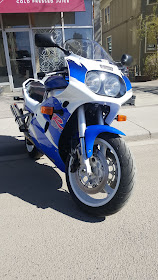



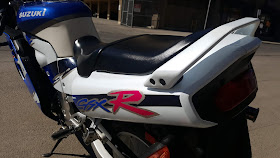
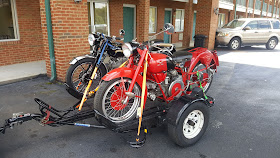









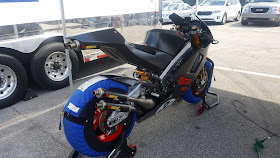



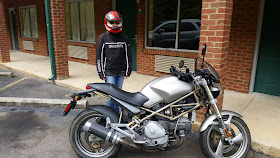
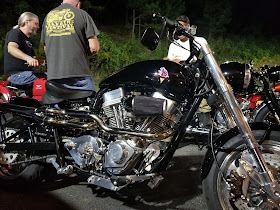


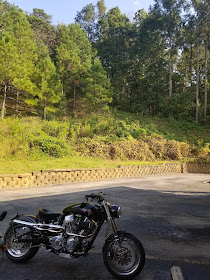
















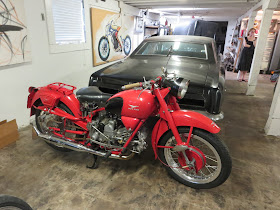
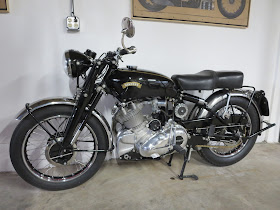





Great to read something from you Jason. I really enjoy all of your articles and stories. I look forward to the future of OddBike, keep at it. Best Regards, Keith.
ReplyDeleteWow Jason! Thanks for this fine article. I found you through Rare Sport Bikes classifieds. My last bike was a 1972 Yamaha R5. My brother and I restored it and sold it to a young man. I am 56 and had always dreamed of an RD 2 stroke. My wife reminded me, Atlanta traffic is no place for a really small, wheely popping screamer. But I got to finally experience a "giant killer" from my youth!! Keep writing about incredible bikes and I'll look forward to your future video interviews!! Geoff Roper, Atlanta, GA USA
ReplyDelete